Keeping pets is becoming a way of life post-pandemic worldwide. Hong Kong has taken a major step forward to make the city more pet-friendly in an industry projected to grow by leaps and bounds over the next decade. Stacy Shi reports.

Hong Kong is fast embracing pet culture amid a booming pet economy partly fanned by the COVID-19 pandemic and a rapidly graying population.
As part of a major step to streamline legal animal imports, Hong Kong has expanded its quarantine facilities and cut the mandatory isolation period for pets from the Chinese mainland from 120 days to 30 starting from June 3.
New animal quarantine facilities have been built at the Kowloon Animal Management Centre of Agriculture, Fisheries and Conservation Department (AFCD), raising the holding capacity for cats and dogs to 34 and 30, respectively. Along with shorter quarantine, the changes have significantly reduced the waiting period for applicants that had once stretched to 15 months.
READ MORE: Hong Kong's light rail pet-friendly scheme to go regular soon
The reform is in response to increased demand, with the number of applications to bring in cats and dogs from the mainland having surged nearly tenfold between 2020 and last year — from 22 to 212. The mainland’s pet industry has seen an explosion in recent years, bringing in 345.3 billion yuan ($48.4 billion) in 2024. Driving the change is a more affluent society and a falling birth rate, according to the 2024 China Pet Industry Research Report, published by Chinese-economy portal platform iResearch Consulting Group.
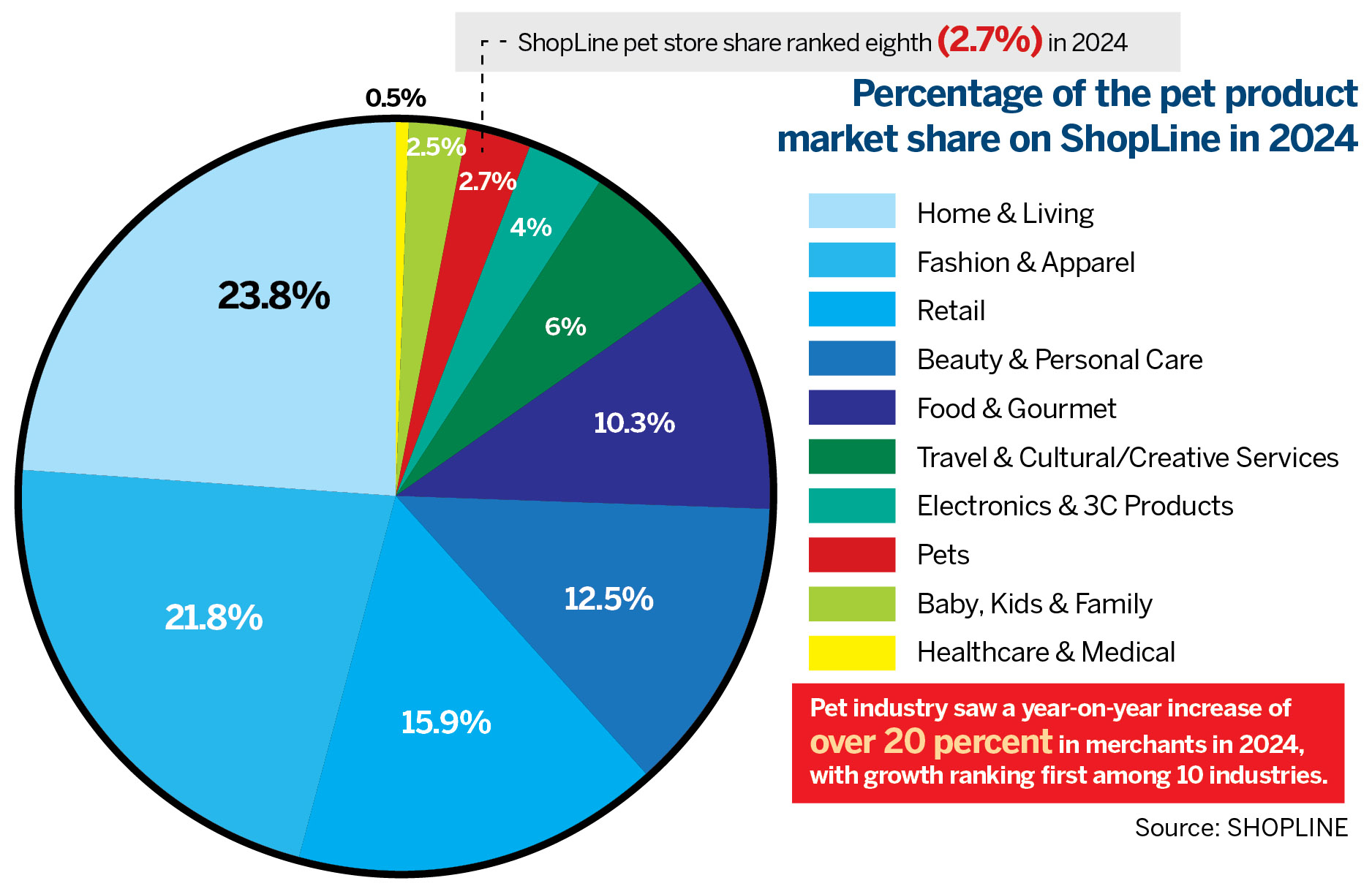
Terence Chong Tai-leung, executive director of the Lau Chor Tak Institute of Global Economics and Finance at the Chinese University of Hong Kong, says heavier cross-boundary traffic has contributed to the rise.
To their owners, pets are no longer just companions, but family members that play a key role in making decisions like relocating home. Yet, such a commitment is often tested by red tape and strict, complex procedures, prompting some to take extraordinary steps to keep their families intact.
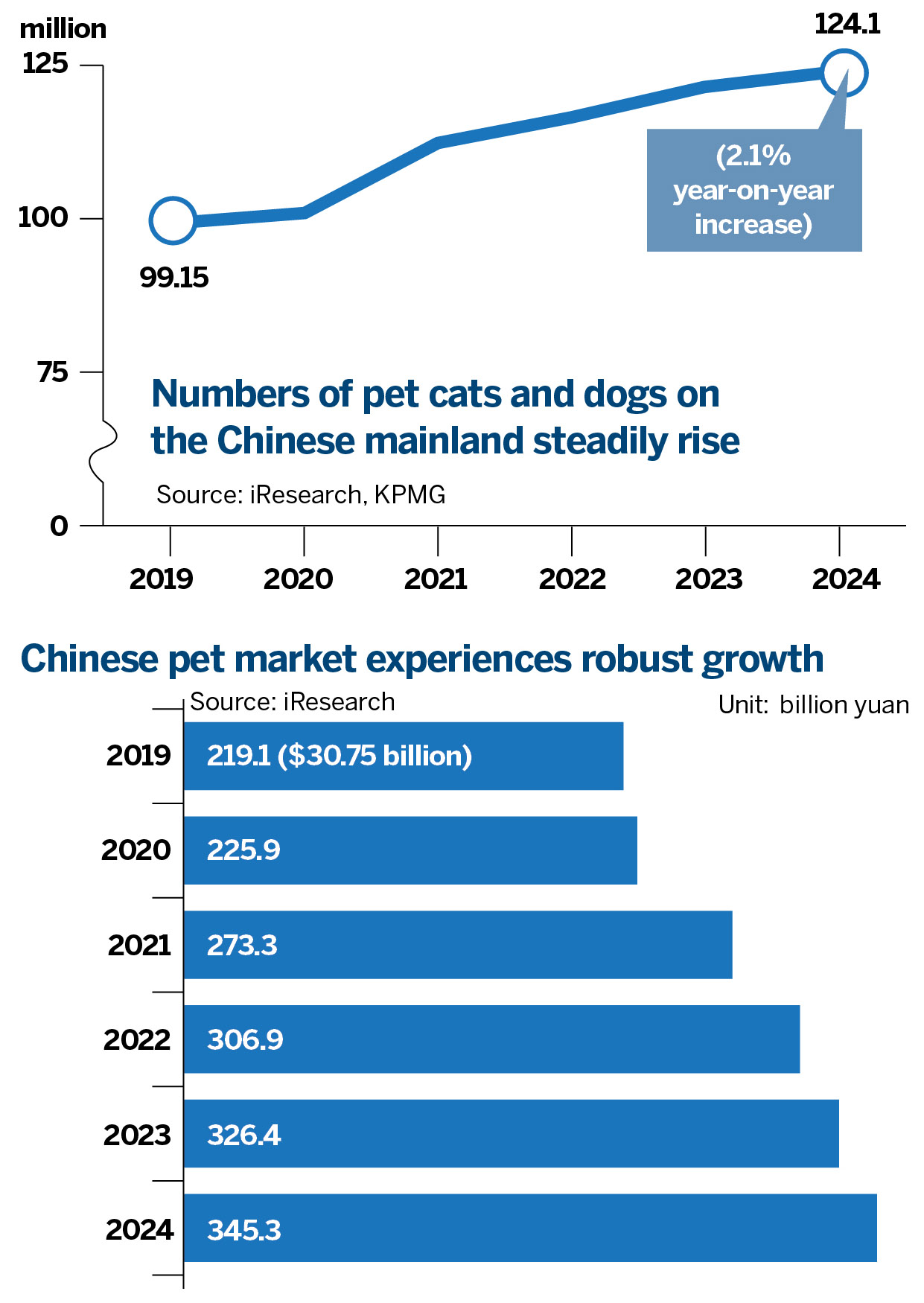
Cross-border pet dilemma
Maggie An, 35, had to overcome Hong Kong’s requirement for pets to arrive in the city as aircraft cargo. Though her dog from the United States was quarantine-exempt, she refused to opt for a 14-hour cargo journey and chose a six-month detour through Shanghai and Taiwan instead to enable her pet to travel in the cabin, enduring just a final 1.5-hour cargo trip from Taiwan to Hong Kong that she found to be “more acceptable”.
Despite Hong Kong’s reduced quarantine period, she still decries it as “outdated”, saying the long wait and cargo requirements have forced people to take matters into their own hands, driving some to turn to illegal gray channels that typically involve hiring mainland-based transport companies to bring pets into the special administrative region — an illegal and highly risky practice.
Another pet owner, Chloe, says she faced unexpectedly long waiting times for quarantine, and that a fosterer’s inability to continue housing her cat in Shenzhen forced her to seek alternative means to bring it to Hong Kong.
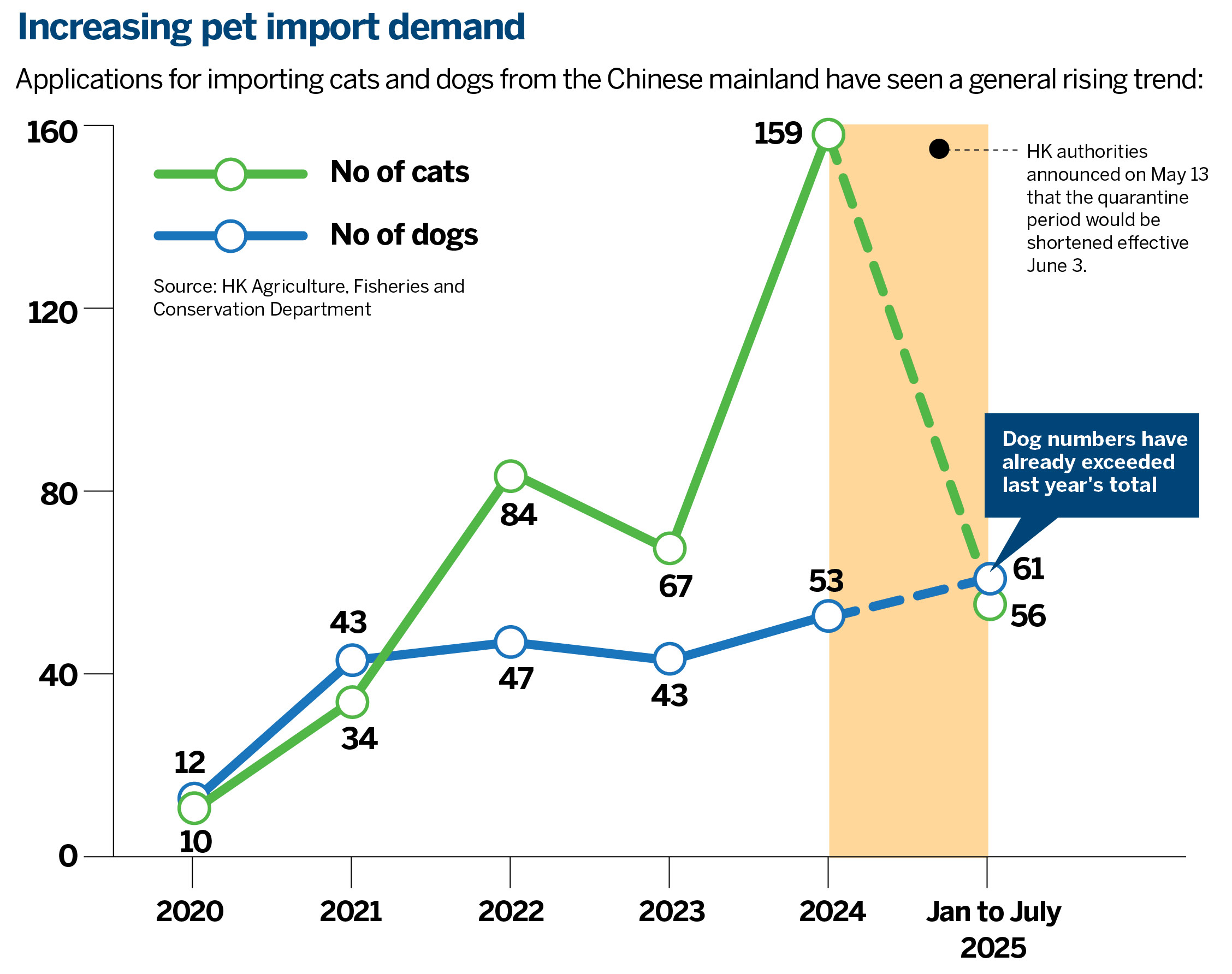
She contacted a pet store in Shenzhen advertising cross-boundary transport services that referred her to a logistics company. The same day, the company picked up her cat and took it to a location in Luohu district before transporting the pet to the SAR on a commercial vehicle for a fee of 1,800 yuan.
Although she agrees that using unauthorized channels is irresponsible and might pose risks like a pet being abandoned if intercepted by the authorities, Chloe says the current system, with its prolonged quarantine requirements and limited visiting hours, offers owners few practical alternatives, particularly in urgent circumstances.
Chong agrees that the quarantine requirements are outdated given the deeper integrated development between Hong Kong and the mainland.
“The SAR government can authorize Shenzhen clinics to conduct health checks for cross-boundary pets before they’re allowed to enter Hong Kong. With a certificate from an accredited clinic and a microchip implanted in a pet, owners could then bypass quarantine,” he suggests.
The illegal cross-boundary movement of pets extends beyond owners importing their animals. A growing trend involves purchasing live pets directly online, motivated by convenience, price, or breed preferences. These transactions are often disguised as “home-bred” or “express delivery” offers, but rely on gray smuggling networks that bring unquarantined animals into Hong Kong.

According to a survey released in May by Hong Kong’s consumer watchdog, the Consumer Council, about 90 percent of 13 online pet traders it contacted were believed to have smuggled pets from the mainland, or dealt in unlicensed breeding or trading of pets. Most of the animals bought online were also found to be sick or in a poor condition.
Willie Wong — an independent animal rescuer — says he has observed a deeply troubling increase in pets being abandoned due to poorly regulated breeding and smuggling.
According to Wong, who runs a private shelter for nearly 300 animals, there has been a significant increase in “pet surrender” requests in the past year — a trend attributed to economic pressures, including breeding farms shutting down and families unable to afford their pets.
He says many abandoned animals had been smuggled into Hong Kong, with buyers often citing cheap prices, a pet’s cuteness, or convenience as reasons for purchasing them online, with little regard for the animals’ welfare or consequences.
Wong says that during transport, hundreds of animals are normally crammed into unventilated trucks or boats without sanitation. If intercepted, smugglers often discard them, sometimes throwing them into the sea. Many pets that survive the journey carry contagious diseases like respiratory infections, feline panleukopenia or canine distemper.
He recalls a tragic case in which a cat bought on Xiaohongshu arrived in Hong Kong with panleukopenia and, within a week, had killed the owner’s five other cats.

Mark Mak Chi-ho of the Non-Profit Making Veterinary Services Society estimates they receive at least one case of a pet suspected to have been smuggled from the mainland each month. Many owners themselves are evasive about the animals’ origins when they take them to veterinary surgeons.
He says certain health problems, like feline panleukopenia and canine distemper, are common among smuggled animals, private breeders and pet stores. These highly contagious diseases thrive in group settings where young animals with weak immune systems huddle together, causing disease outbreaks.
Faced with expensive, often futile treatment, many owners decline care. Some opt for euthanasia, others abandon treatment and some even demand “defective” pet certificates for financial returns, treating pets as merchandise. “We refuse these requests to avoid the perception of pets as commodities. Instead, we encourage treatment or get the owner to sign a waiver abandoning care,” says Mak.
He attributes the root of the problem to affordability. In the past, when the pet market was small, licensed breeders would charge premium prices, like HK$6,000 ($769) for a purebred Persian cat. Nowadays, animals from online sources, unlicensed breeders or smugglers may be sold for as little as HK$1,000.
“The current ease of acquisition of pets is what leads to animal suffering — by treating pets as disposable goods, we foster a culture that trivializes the value of life,” he says.
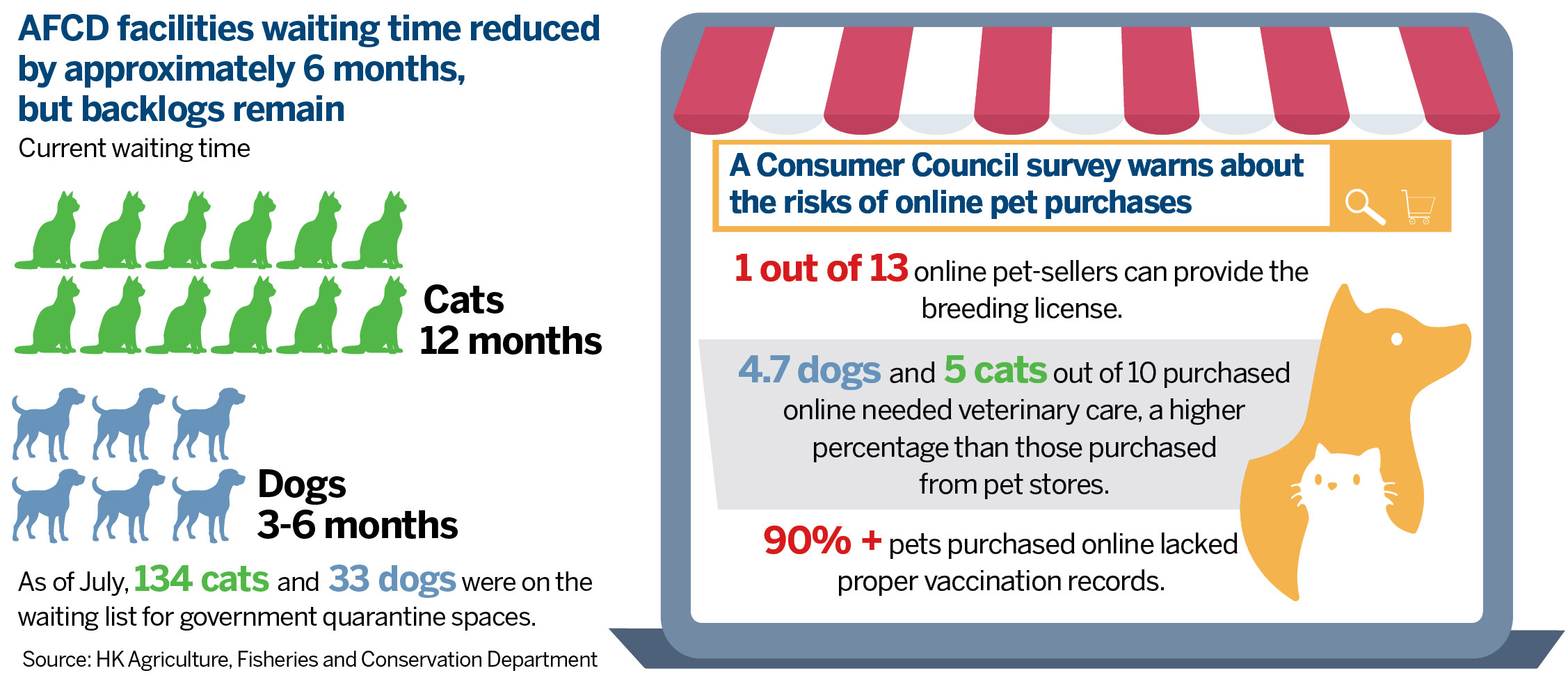
Mak warns that the trend will incentivize the mass breeding of unhealthy pets for profit, attracting impulsive buyers lured by low prices. He says while public education is essential, it is insufficient against market forces. He urges the government to enact stricter laws and proposes that purchasing from unlicensed breeders be penalized.
The solution, he says, would be a complete ban on private breeding. Although he agrees this would make pets more expensive, it would deter impulse purchases made possible by easy acquisition which results in widespread animal suffering and commodification.
Aggravating the problem is Hong Kong’s booming pet market. Spending at pet expositions hit a record-high this year. Pet-related supplies on online platforms, according to local e-commerce platform SHOPLINE, grew by 20 percent in 2024 — the fastest-expanding segment of the city’s e-commerce market.
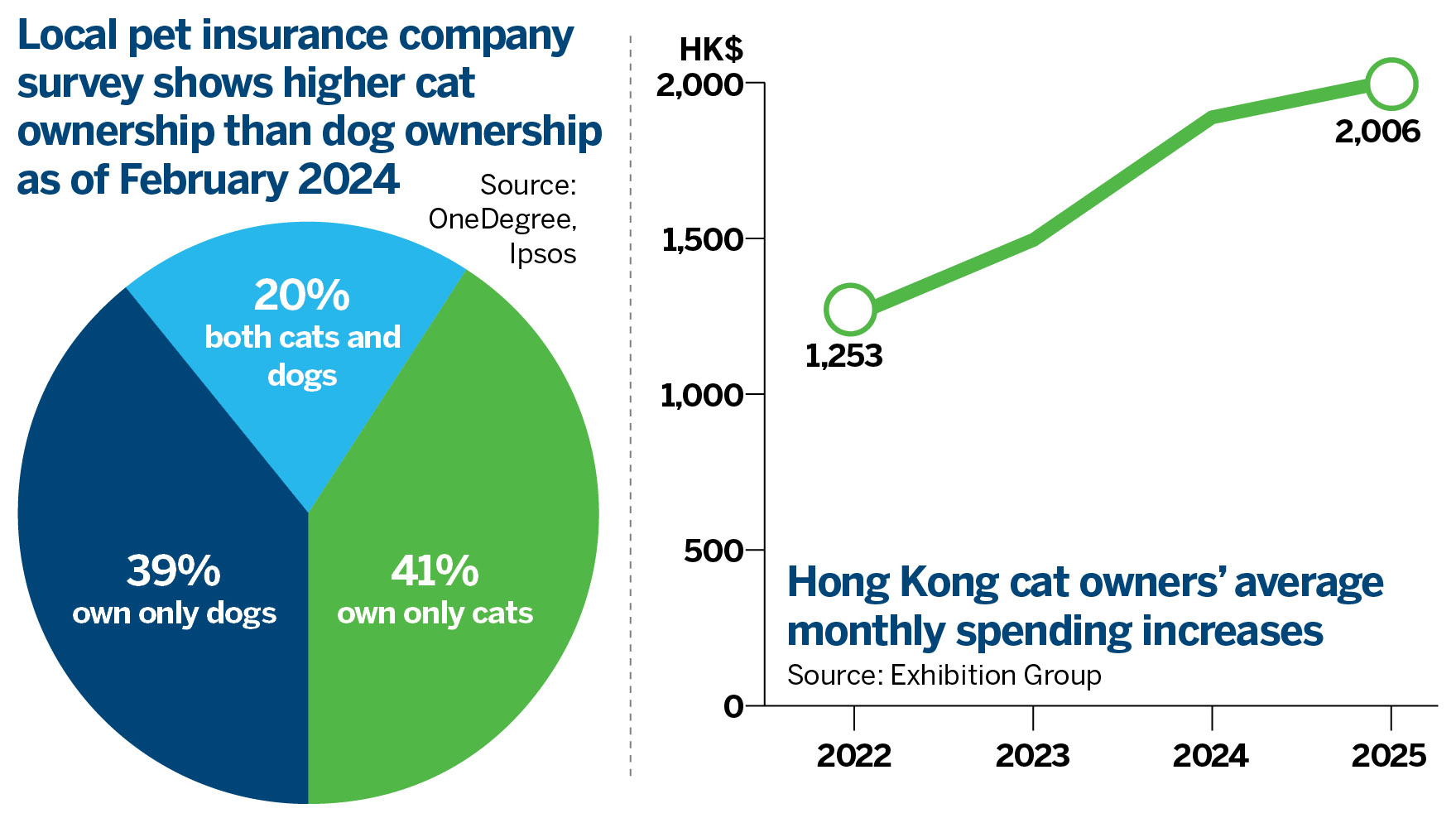
Booming pet market
The number of veterinarians in Hong Kong is also on the rise, standing at 1,364 as of April — up 15 percent since 2018. The Leisure and Cultural Services Department manages 55 pet gardens and 180 inclusive parks for pets, with cats and dogs being allowed on light rail trains from Sept 1, offering more vibrant and inclusive recreational spaces for pets and owners.
In the latest Policy Address delivered on Sept 17, Chief Executive John Lee Ka-chiu further proposed a licensing arrangement allowing dogs to enter dining premises, marking the lifting of a 30-year ban, to promote the pet-friendly economy.
To balance the interests of pet owners and other residents, approved restaurants will be required to display clear signage indicating that dogs are permitted.
“Pet-friendly restaurants will create new business opportunities for the industry,” Lee said.
From increasing the number of pet-friendly venues, to gourmet pet food, insurance plans, and a newly-introduced pet smartphone enabling pets to call their owners with designated movements, Hong Kong is embracing pet culture.
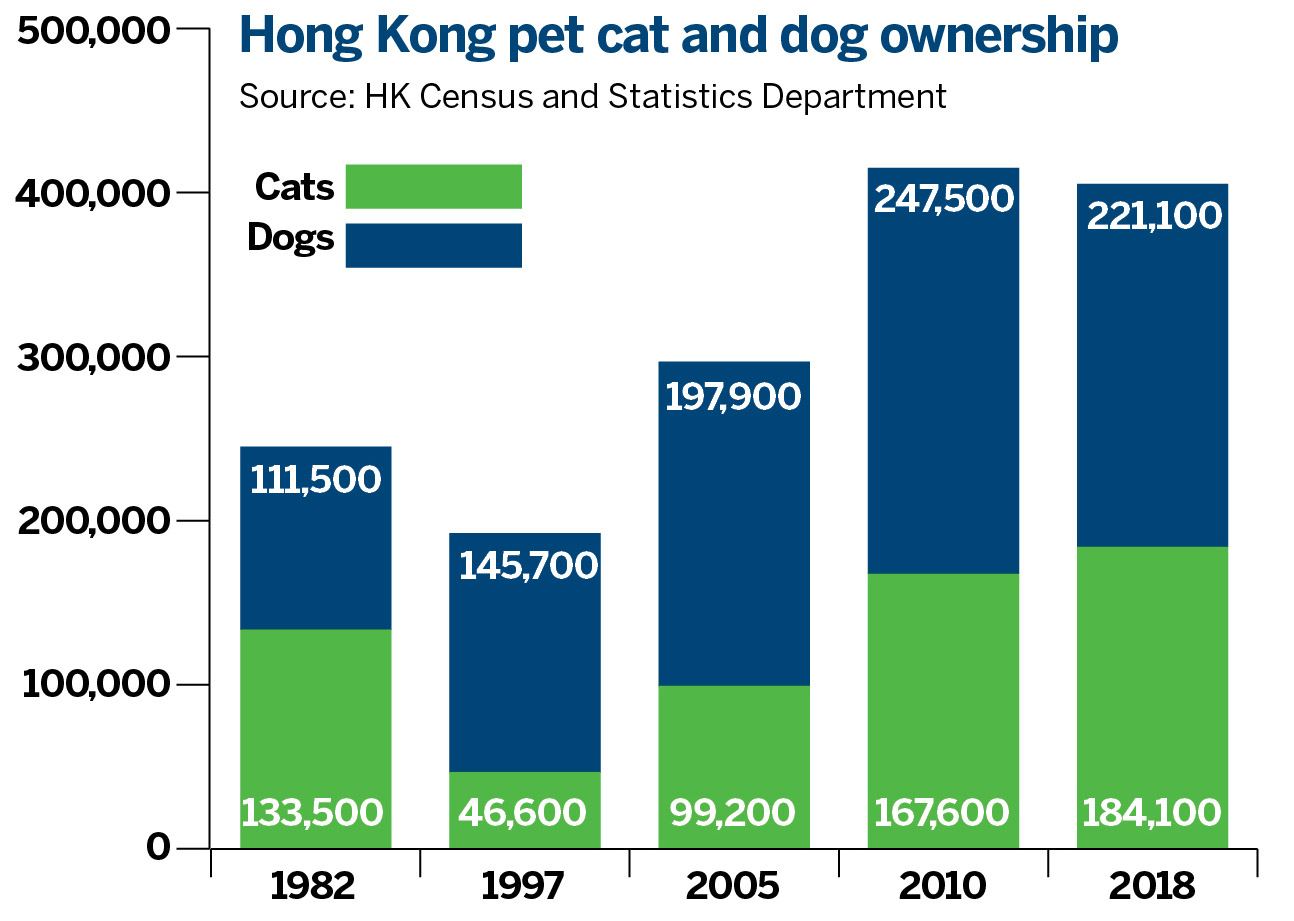
Carl Li Ka-kin, who chairs the Hong Kong Pet Trade Association’s government policy affairs unit, says the local pet economy is projected to hit HK$25 billion this year, covering sectors like pet food, healthcare, supplies and services, including medical care and pet tourism.
Hong Kong’s most popular pets are dogs and cats, with cat ownership notably on the rise. Compact breeds and smaller animals like rabbits are also favored due to limited living space. Pet ownership is largely driven by younger adults — those born after the 1990s — who are under social and economic pressures, and are increasingly choosing pets over having children. Many seniors also keep pets for companionship.
Compared to neighboring markets, Hong Kong’s pet industry is smaller. Japan’s market is valued at about 1.5 trillion yen ($10.2 billion) and focuses on products for aging pets, reflecting its older population, while Singapore’s S$5-billion ($3.9 billion) market emphasizes services like pet tourism and events.
As Hong Kong’s pet population ages, Li says the city should adopt Japan’s expertise in senior pet care formula, as well as Singapore’s model of pet-friendly public spaces. While progress has been made, he believes there is still room for Hong Kong to grow in building a more inclusive environment for pets and owners.
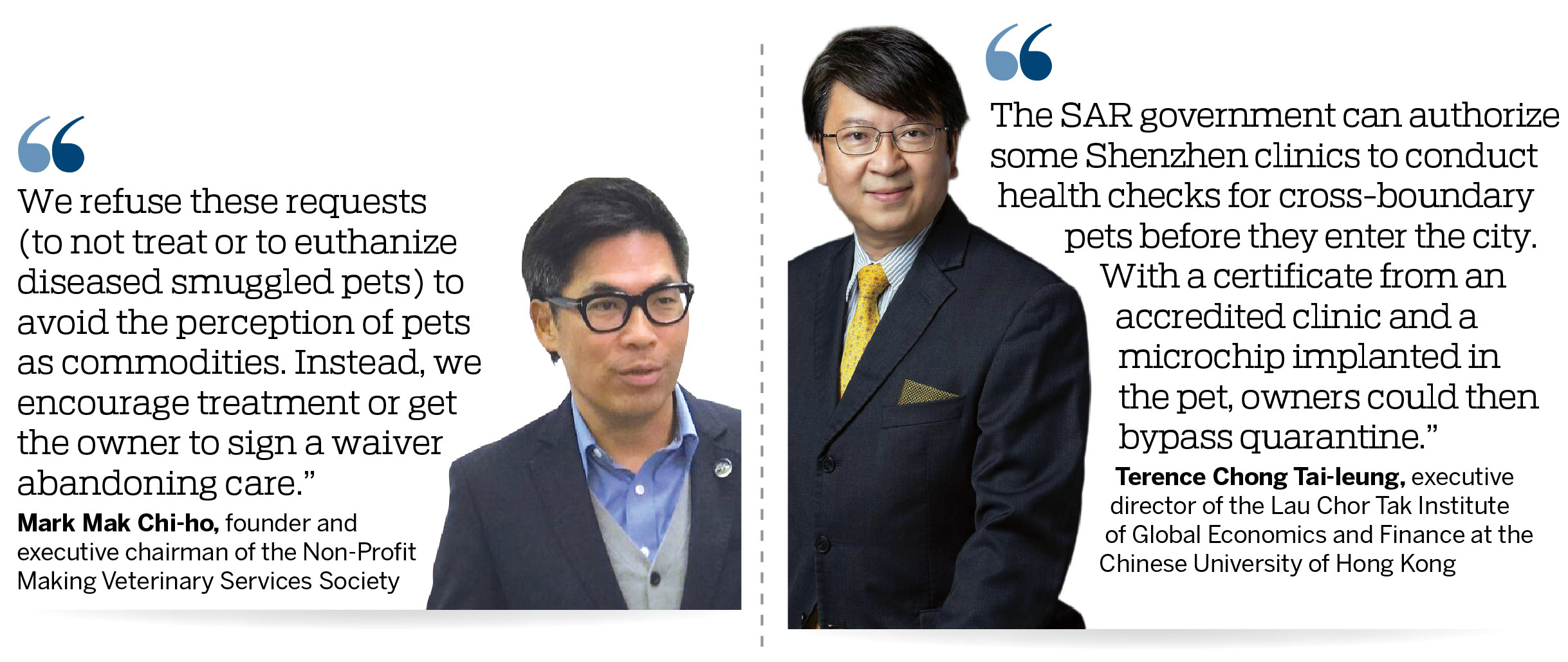
As the SAR’s pet sector continues to grow, so too does the importance of conscious consumer choice. Wong favors adopting pets instead of buying them to prevent abusive practices. He calls for a government crackdown on illegal smuggling and unlicensed breeding, warning that they pose severe biosecurity risks like rabies.
In his view, the public should adopt pets from licensed shelters where animals undergo health checks, vaccinations and behavioral assessments.
The AFCD has revealed a sobering reality. Last year, its animal management centers took in 1,012 dogs and 465 cats besides 1,742 other animals confiscated due to illegal importation or non-compliant entry into Hong Kong. Yet, adoption rates remain modest at 41 percent, 39.9 percent and only 5.4 percent, respectively, for dogs, cats and other animals.
ALSO READ: Pet-friendly light rail trial extended in Hong Kong
According to Nigel Kwan Chun-lok, a veterinary officer at the AFCD, most adopted pets are strays, abandoned, or animals that have been seized. He says the adoption rate could still improve, although fewer people may adopt pets due to increased travel and activities after the reopening of borders following the pandemic.
“As the pet market gradually expands, education is crucial. Keeping a pet bears heavy responsibility. Rather than encouraging people to buy pets, which often perpetuates inhumane practices, we should prioritize adoption as a more ethical and compassionate alternative,” says Chong.
Next Actions
- Quarantine requirements need to be further revised along with quarantine facility expansion while ensuring local rabies prevention.
- Promote a cross-border mutual recognition mechanism for quarantine standards with the Chinese mainland to streamline pet import procedures.
- Strengthen crackdown on illegal smuggling and regulate the purchase of pets from illegal sources to curb gray-market activities from the demand side.
- Enhance public education efforts and support the promotion of pet adoption mechanisms.
Contact the writer at stacyshi@chinadailyhk.com


